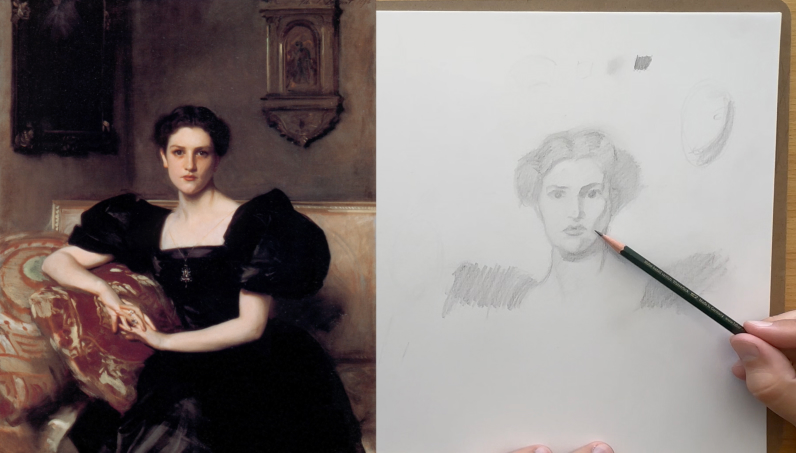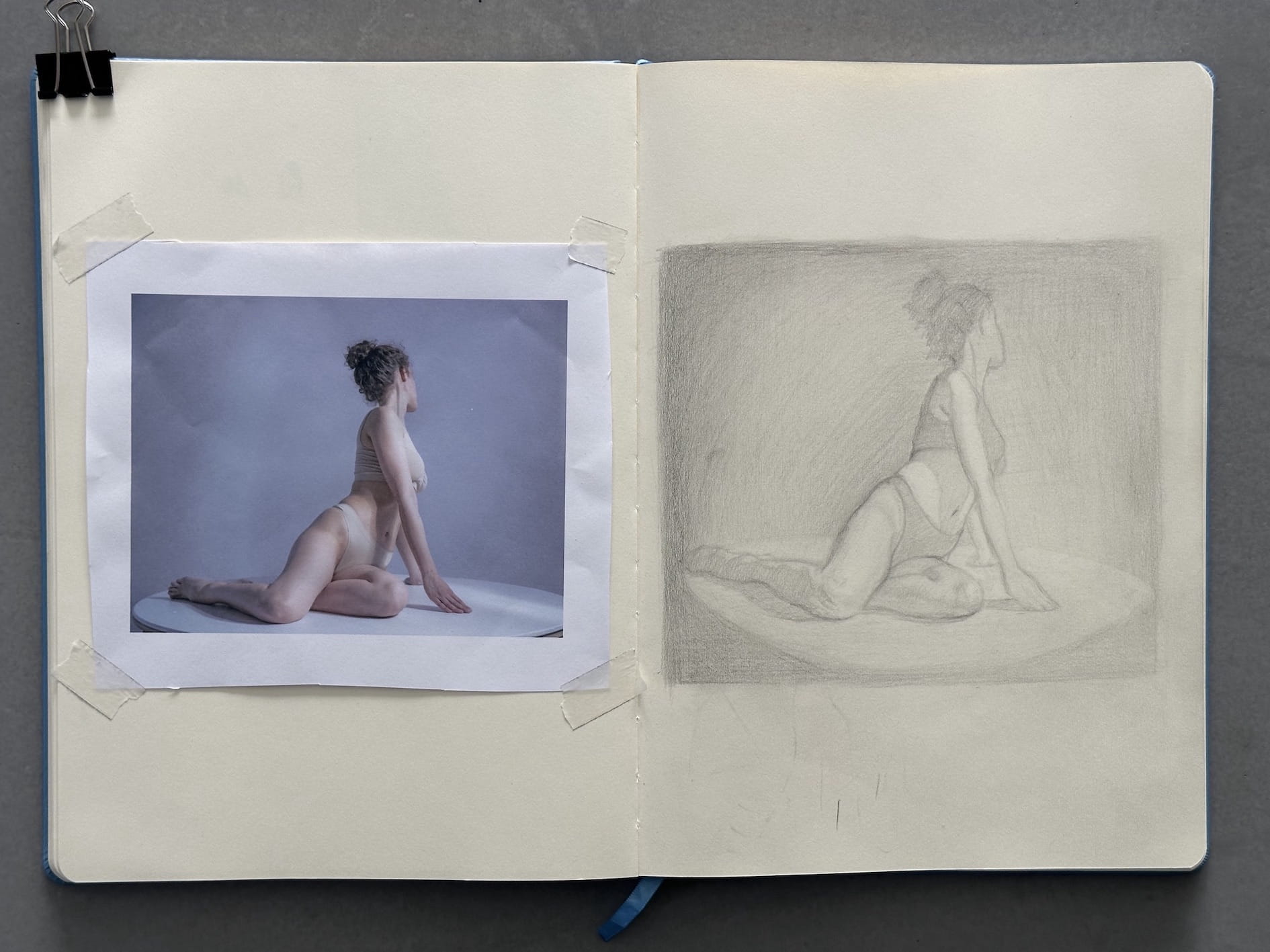
Do you dream of drawing anything you want...
...in a way that looks realistic, beautiful and brings across you unique vision?
There’s only one way to get there:
Solid Drawing Fundamentals.
Introducing:
The Drawing Fundamentals
Course.
In this self-paced video course with over 10 hours of content you learn how to:
1) Use materials, posture and positioning to your advantage
2) Draw clean, masterful lines
3) Move from line to tone
4) Design shapes and draw with accuracy
5) Inject life into your drawings using gesture
6) Create atmosphere and realism using value & edges
7) Make your drawings come off the page with form...
... and how to apply these foundational skills to realistic portrait and figure drawing!
But before showing you the exact course curriculum in detail, allow me to introduce myself:
Hi I'm Felix,
and I'm passionate about teaching drawing fundamentals, as they were the key that unlocked realistic figure and portrait drawing for me.
I believe anyone can learn to draw well and save years of frustration by learning the fundamentals first.
Sadly, many drawing students get overwhelmed, bored by their lack of progress, and eventually... quit.
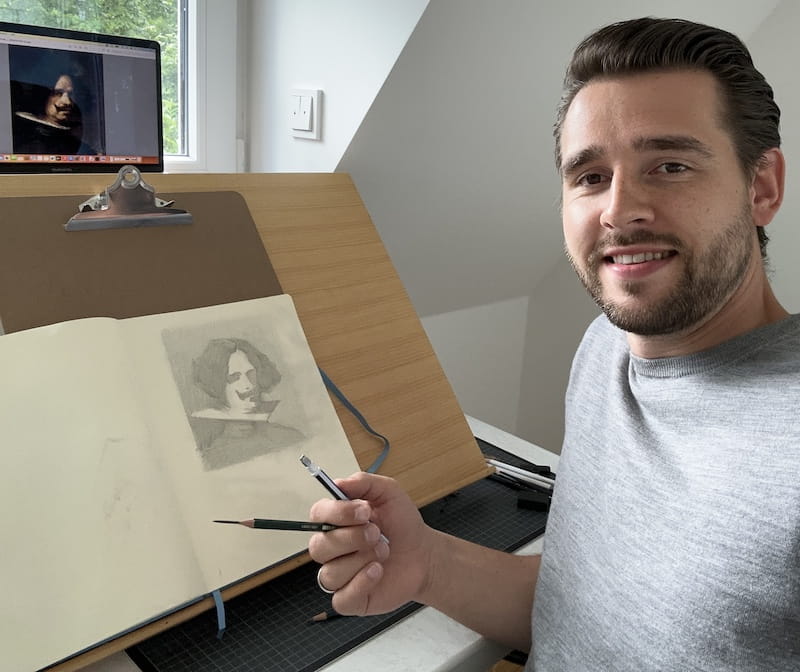
Does Drawing Feel Like an Unobtainable Skill to You?
I can relate!
For many years I struggled figuring out how to get better at drawing.
I'd find one method of drawing and focus exclusively on it, only to realize months or years later that drawing that one way felt limiting.
❌ I had a long phase of just measuring angles, matching values, and "copying" what I saw exactly. At first I got excited when my drawing finally looked realistic. But then I realized being a human copier machine isn't what got me into drawing in the first place.
❌ I had another phase studying anatomy in detail. I'd learn about muscle insertions, how they connect, function and so on. At first I got excited as my figures looked more "put together". But they also looked too muscular and "anatomical".
❌ Then I had a phase of focusing on gesture drawing. I studied animation drawings and again got excited. My drawings were becoming more dynamic and flowy! But somehow my accuracy, my anatomy knowledge and everything else became worse.
❌ Then I'd learn about form and perspective. I'd try and make my drawings look more boxy and solid...And while I learned to draw boxy mannequins, I still was at a loss how to use form to make better drawings.
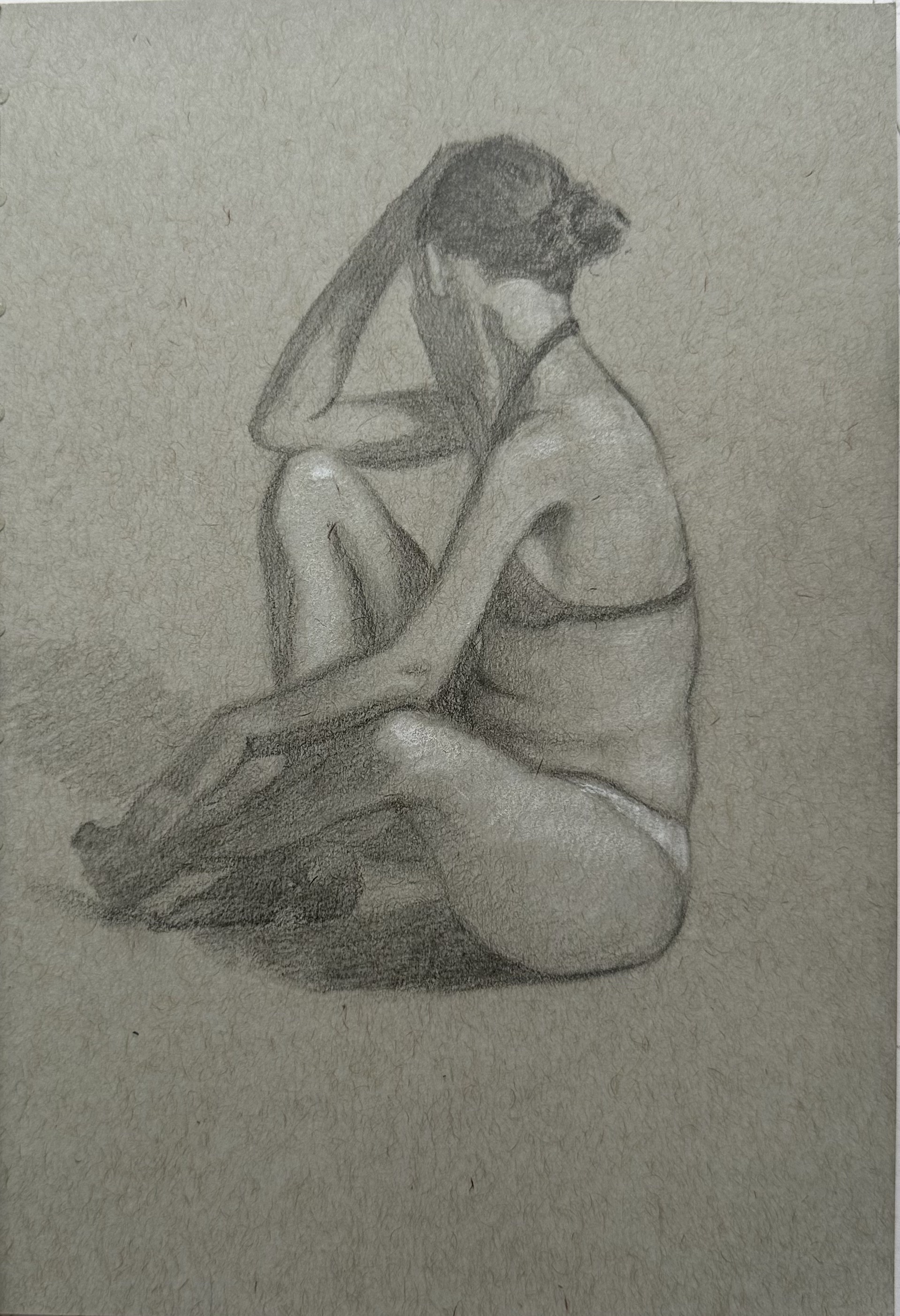
Close to giving up drawing forever, I made a crucial decision.
To read every drawing book, attend any seminar, and take any online course by pros I admired, until I finally "get" drawing.
And that's what I did.
I learned from a wide range of teachers from very different schools of thought.
From sight-size drawers, animators, illustrators, painters... Anyone who could draw in a way that inspired me I learned from.
And piece by piece the "big picture" of drawing started to emerge, leading up to this big realization:

The game of becoming great at drawing is a game of continuously improving your drawing fundamentals.
Once I realized this something magical started to happen:
While in the past I often got worse from drawing to drawing, now, each drawing I made was significantly better than the last.
I could SEE which fundamental was holding my drawing back, I KNEW how to improve that fundamental drawing skill using targeted exercises, and I understood how to BALANCE the newly improved skill in my overall drawing process.
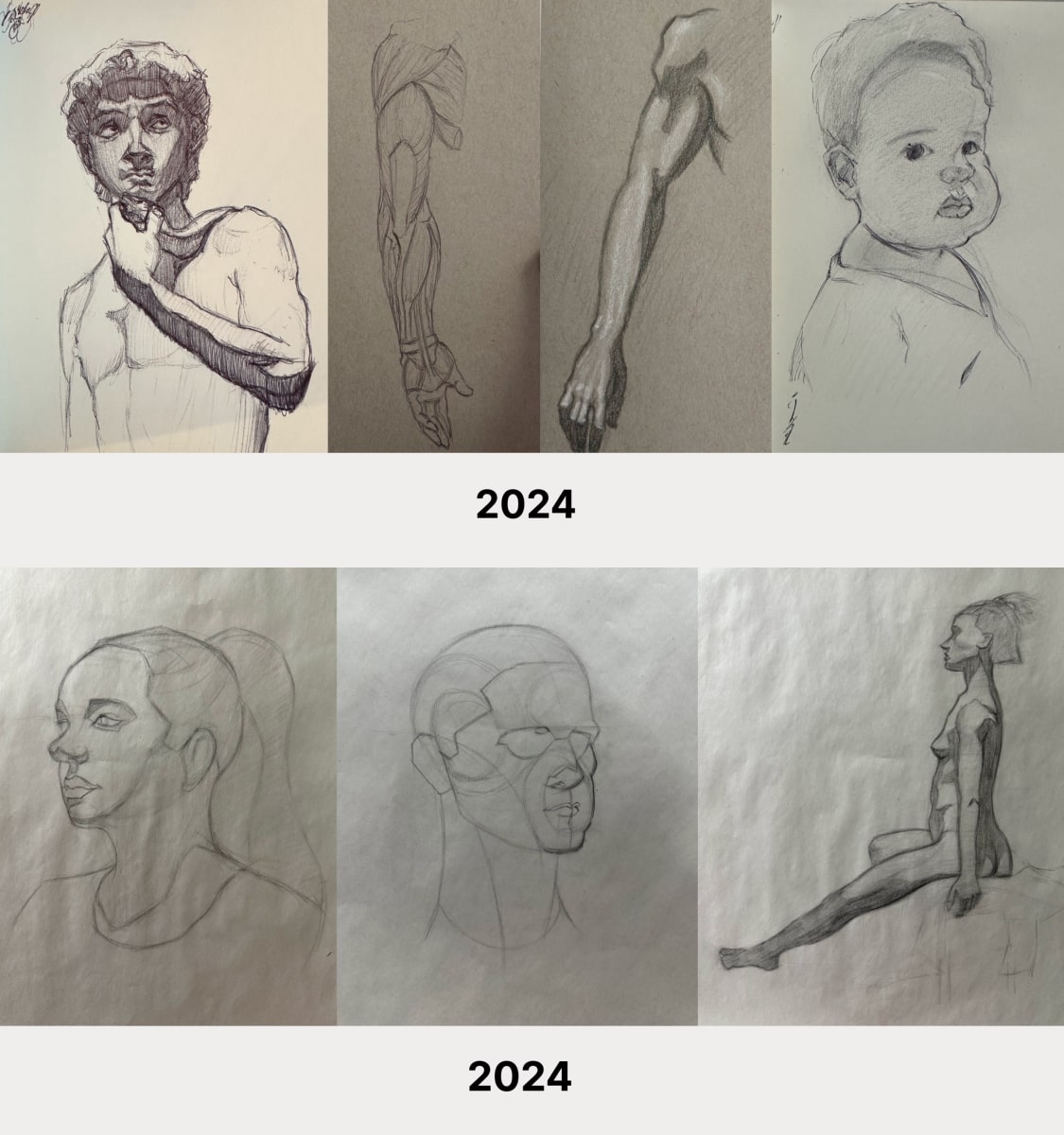
You too can get the drawing skills you dream of!
By learning the foundational drawing skills taught in The Drawing Fundamentals Course, you too can become great at drawing in weeks not decades, and make big skills jumps with every single drawing you create.
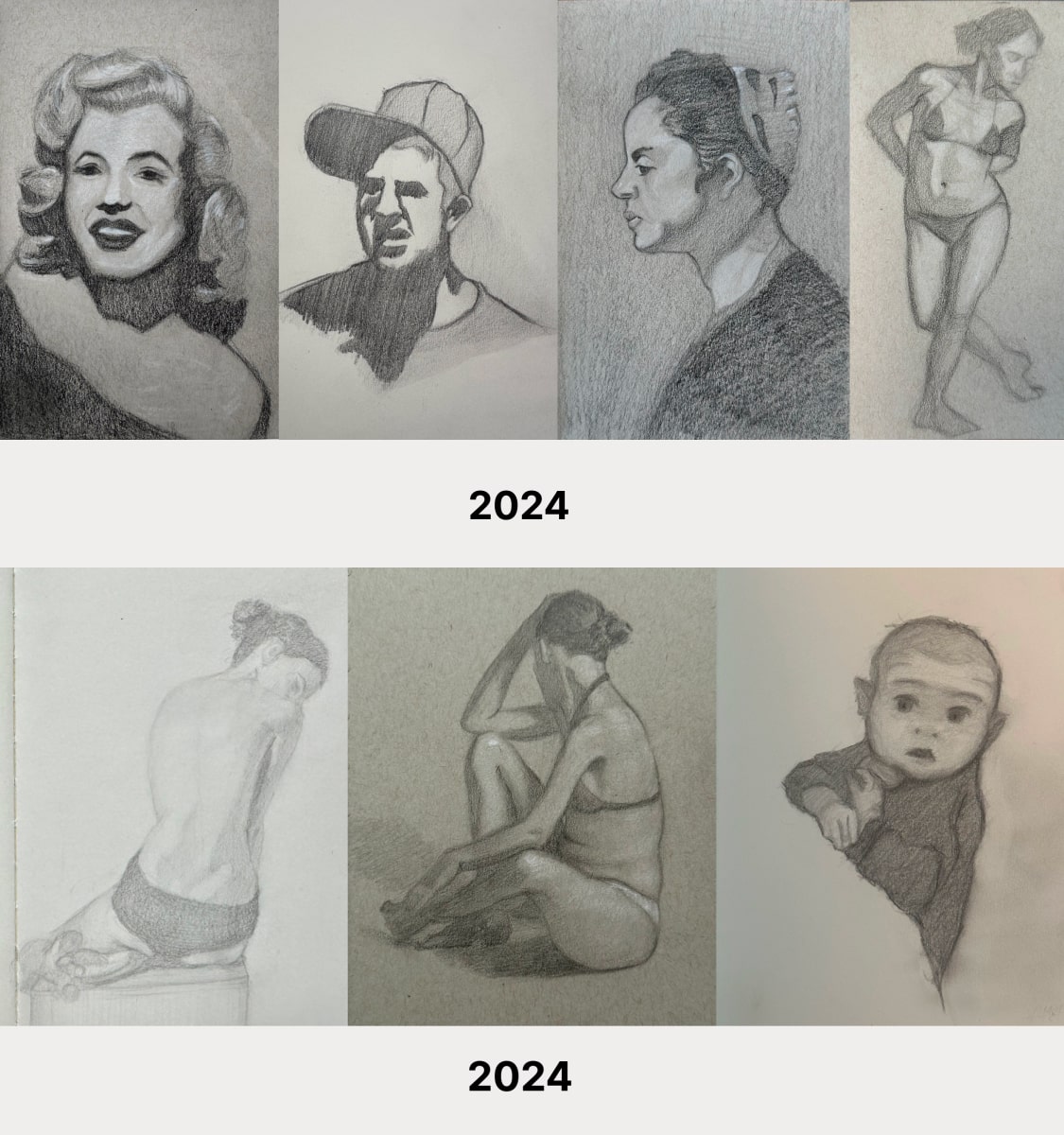
Who This Course is For:
-> Beginners wanting to learn drawing the right way.
-> Those excited by realistic figure and portrait drawing but not sure how to improve.
-> Anyone who wants to get great at realistic drawing but is confused and overwhelmed.
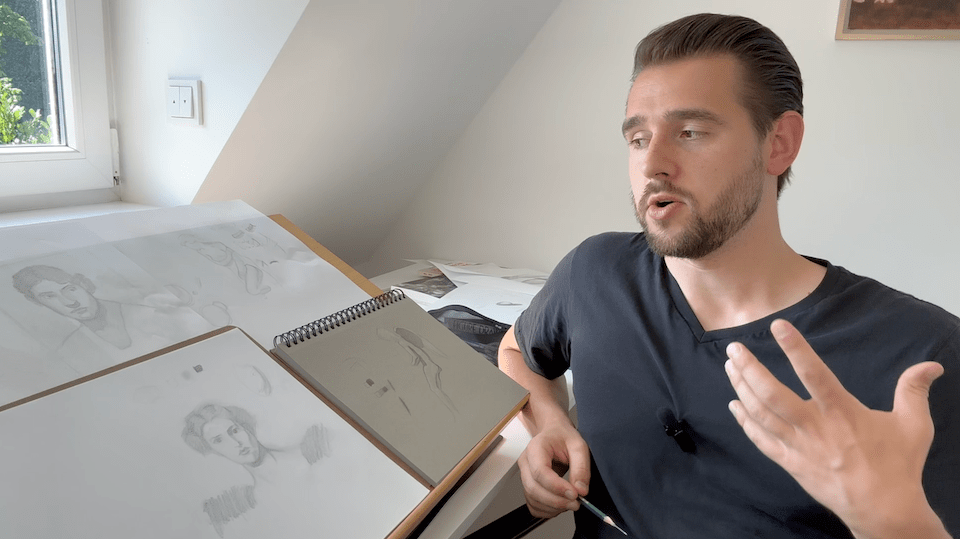
Course Curriculum
These are all lessons included in the course.
Scroll down to learn more.
Introduction
Available in
days
days
after you enroll
Day 1 - Materials
Available in
days
days
after you enroll
- Materials Overview & Approach (7:05)
- The Best Drawing Tools For Beginners (16:09)
- Sharpeners, Erasers & Blending Tools (19:38)
- Paper, Sketchbooks, Easels & Other Accessories (11:04)
- Graphite Pencils & How To Use Them (10:44)
- Black & White Pencils On Toned Grey Paper (4:31)
- Charcoal Pencils (3:41)
- Other Drawing Tools (5:20)
- Pencil Cases & Travelling (7:35)
- Do This Now: Material Experiment
- Feedback Survey
Day 2 - Linear Mark Making
Available in
days
days
after you enroll
Day 3 - Tonal Mark Making
Available in
days
days
after you enroll
- Introduction To Tonal Mark Making (5:23)
- The Keys For Tonal Drawing: Overhand & Backend Grip (10:12)
- Drawing With Erasers & Blending Tools (6:32)
- Practicing Tonal Mark Making - Exercises (11:16)
- Value Scales (15:39)
- Value Gradations (6:41)
- Applying Tonal Mark Making - Figure Demo Part 1 (50:13)
- Applying Tonal Mark Making - Figure Demo Part 2 (32:51)
- Do This Now: Tonal Mark Making Workout
- Feedback Survey
Day 4 - Measuring & Shape Design
Available in
days
days
after you enroll
Day 5 - Gesture
Available in
days
days
after you enroll
Day 6 - Values & Edges
Available in
days
days
after you enroll
- Introduction To Values & Edges (4:44)
- 2 Value Studies - Theory (3:47)
- 2 Value Studies - Velazquez Master Study (24:07)
- Rendering & Edges - Theory (4:06)
- Rendering In Black & White Pencil On Toned Paper - Demo Part 1 (29:10)
- Rendering In Black & White Pencil On Toned Paper - Demo Part 2 (18:53)
- Rendering In Black & White Pencil On Toned Paper - Demo Part 3 (13:36)
- Do This Now: Value & Edge Workout
- Feedback Survey
Day 7 - Form
Available in
days
days
after you enroll
- Introduction To Form (2:58)
- How To learn Form Drawing (4:58)
- Intro To 1-, 2- & 3-Point Perspective (8:14)
- Linear Form Drawing Techniques - Figure Demonstration (35:58)
- Intro To Tonal From Drawing (1:46)
- Light & Modelling Factors (28:51)
- Tonal Form Drawing Techniques - Sargent Portrait Master Study (44:35)
- Do This Now: Form Workout
- Feedback Survey
Outro
Available in
days
days
after you enroll
Bonuses
Available in
days
days
after you enroll
What's Included?

Day 1: Material Mastery
Materials mediate between your eye, mind and hand on one side and the finished drawing on the other.
Materials play a fundamental role in the success of your drawings.
All materials have their strengths and weaknesses. The more deeply you understand those, the easier it'll be to create the marks, values and transitions that you intend.
This module teaches you the basic ways you can manipulate your drawing materials for a range of effects.
Topics covered:
->The best drawing tools for beginners.
-> How to sharpen your pencil for versatile marks.
->How to "draw in the lights" using erasers.
->Secrets to smooth tones using stumps and brushes.
-> Best sketchbooks for learning fast from home.
-> Deep dives into graphite, ballpoint pen, black and white pencil on toned paper.
-> Overview of charcoal pencils, pastels, inking & markers.
🟢 Do This Now: Material Experiment Workout
Day 2: Linear Mark Making
Mark making refers to your hands ability to draw a line as your mind intends it to, confidently, accurately & beautifully.
It's a crucial drawing fundamental, a huge determinator of the success of your drawing, yet most beginners never learn about it.
The best part: You can improve your Mark Making leaps and bounds practicing simple exercises for 5 minutes a day.
Topics covered:
-> How to make confident, beautiful and correct linear marks, and how to consciously design your drawings using 3 types of lines.
-> Specific exercises you can practice anytime, anywhere to improve your mark-making skills.
-> Posture: The key to confident marks, that's rarely talked about.
-> Head & Subject Positioning: The secret to avoiding distortions and improving accuracy, that's often overlooked.
-> Figure Drawing Demonstration: See how to apply linear mark making in an actual drawing, and experience how this fundamental translates into more beautiful final drawings.
🟢 Do This Now: Linear Mark Making Workout


Day 3: Tonal Mark Making
Tonal mark making is the natural progression from linear mark making, and a key to realism.
Yet many drawing students never learn how to make proper tonal marks.
It took me years to find out how to draw tonally, as I’ve found the information on this topic is very scattered and hard to compile.
Topics covered:
-> The 2 grips you need to master tonal drawing. Learning just these 2 techniques increases your versatility immensely, and was one of those great epiphanies in my drawing Journey.
-> How to draw with erasers and blending tools, to create interesting light effects and smooth tones in your drawing.
-> Effective Tonal Mark Making Exercises, you can practice daily for fast improvements in the tonal quality of your drawings.
-> Your 2 best friends: Value scales and value gradations. How to practice them, and how to apply them in your drawings.
-> Figure Drawing Demonstration: Learn how to apply tonal mark making to create drawings that have depth and atmosphere.
🟢 Do This Now: Tonal Mark Making Workout
Day 4: Shape Design & Measuring
This module combines shape design with free-hand measuring techniques, because mindlessly measuring without training your sense for design is pointless.
Shape design has a huge impact on how well your drawings read, yet most beginners don't even realize it exists.
Topics covered:
-> Intuitive freehand measuring techniques: how to get a likeness using angles, plum lines, triangulation, negative space and more.
-> The actual key to likeness: How to see and design shapes.
-> How to practice shape design: Watch me as I demonstrate a John Singer Sargent shape design master study.
🟢 Do This Now: Shape Design Workout
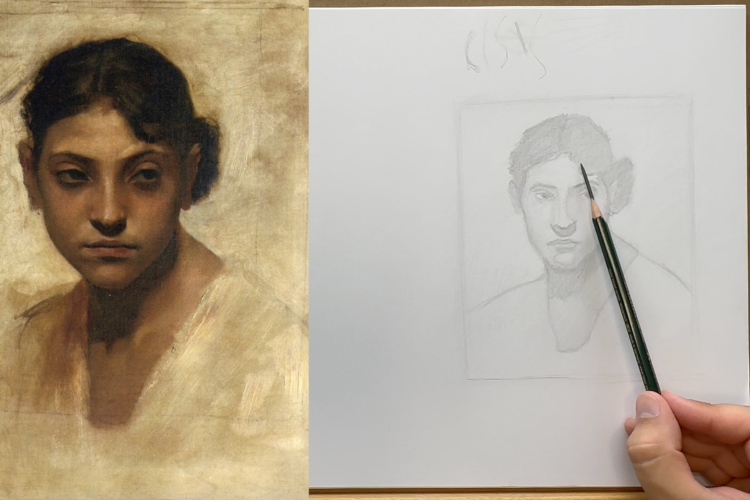

Day 5: Gesture
Gesture is about capturing the dynamic, flowing, emotional nature of whatever you are drawing, instead of just copying it.
With gesture, your drawings look dynamic, and full of movement.
Without gesture, your drawings look lifeless and stiff.
The good news: Gesture drawing is fun to practice, and you'll learn how in this module!
Topics covered:
-> What gesture is, how to see it and why it's a crucial drawing fundamental.
-> Master study: Learning gesture from the great John Singer Sargent.
-> Gesture Exercise demonstration: Learn how to practice figure and portrait drawing using gesture drawing.
🟢 Do This Now: Gesture Workout
Day 6: Value & Edges
Value is a critical layer of any image, and as fundamental as line or shape. Edges describe the transitions between values and communicate turning form.
This module is a fast-track to using value & edges in your work for greater depth and atmosphere.
Topics covered:
-> 2-Value Studies: How to use them for a strong read & why they are so effective
-> 2-Value Velazquez Study Demonstration: Learn how to train your eyes to see in 2 values using this highly effective exercise.
-> Toned Paper Techniques: Learn a simple material combination for enhanced realism and rendering.
-> Sculpture drawing demonstration: Watch an in-depth demo of me rendering a sculpture, using black and white pencil on toned grey paper.
🟢 Do This Now: Value & Edge Workout

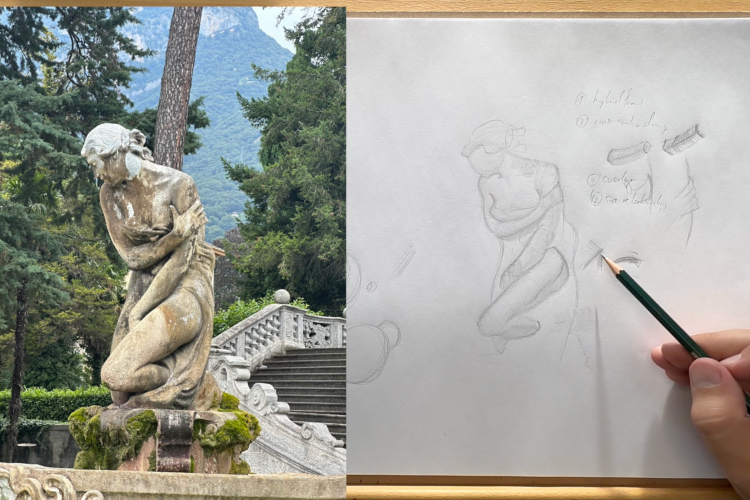
Day 7: Form
Last, but definitely not least, we’ll cover form.
Form is about creating a 3D-looking drawing on paper.
While line, shape and value can already create beautiful drawings, mastering form principles will truly get your drawings "pop" off the page.
Topics covered:
-> How to create the illusion of 3D form on paper.
-> Linear form drawing techniques: How to use cross-contour drawing to render drawings in 3d space.
-> Tonal form drawing techniques: How to "mass" form into your drawings, like a sculpturist uses clay.
-> Introduction to 1-,2- and 3-point perspective.
-> The most effective exercise to train your eye to "see" form.
-> Form Drawing Demonstrations: Watch me demonstrate linear and tonal form drawing techniques.
🟢 Do This Now: Form Workout
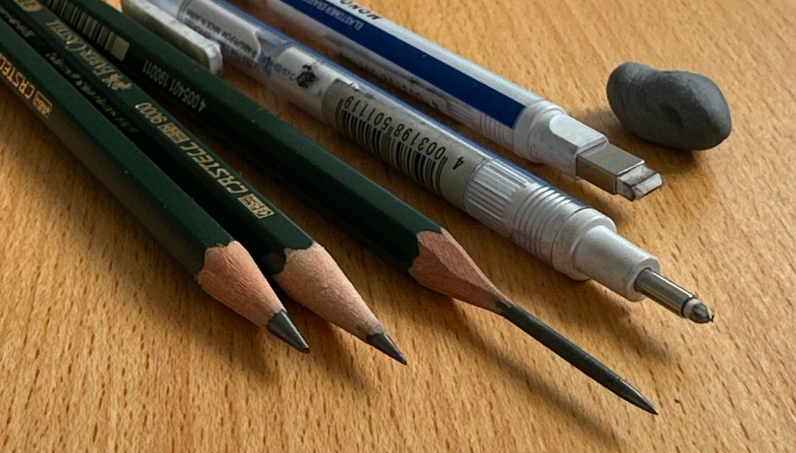
Bonus #1: Self-Study Resource Guide
✔ List of the very best 1-3 instructional books I ever read on each drawing fundamental, so you have a clear path to dive deeper in your studies.
✔ The list includes recommendations on anatomy, composition, creative process and more.
